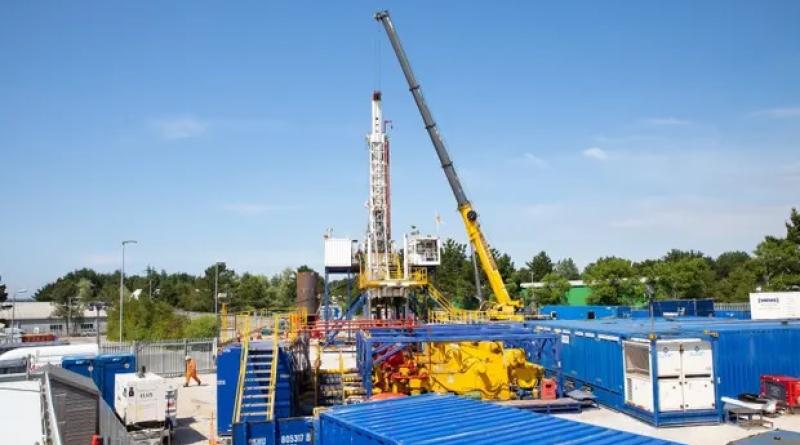Hopes for power and purpose from an energy industry in flux

As war drives up fossil fuel prices and profits, new technologies show a way forward for the generators in 2023
A tall white rig punctures the Cornish skyline, offering a hint of a new industrial era at a site near Redruth, once a copper mining capital. This year, the first power produced by a geothermal plant in the UK is expected from a project three decades in the making.
The United Downs project aims to produce constant low-carbon electricity for the grid, and heat for homes, from hot rocks. Geothermal energy is an established power source in volcanically active areas of the globe near to tectonic plates. However, it can also be used in other areas if the rock temperature is high enough, and the rocks are permeable enough for water to circulate.
The project is developed by Geothermal Engineering and has received funding from the EU and Cornwall county council. Its introduction to the electricity generation mix will come in a year which could prove defining for a British energy industry that has spent the past 12 months in crisis mode. Here’s what other changes and challenges the sector can expect in 2023:
Renewed impetus for renewables
The importance of renewable power sources was underlined in 2022. The invasion of Ukraine sent gas prices soaring and left countries paying through the nose for gas to replace Russian supplies, and hit household and public finances.
Expect a fresh focus on new renewable projects this year, in part as a result of the lifting of the ban on onshore wind in England. Meanwhile, Scotland’s largest offshore windfarm – the £3bn Seagreen project, a joint venture between SSE Renewables and France’s TotalEnergies – is expected to be fully operational by the summer. An even bigger windfarm, at Dogger Bank 80 miles off the north-east coast of England, should also deliver its first power by the summer. And another SSE project, Coire Glas, is taking shape: it will be the first large-scale pumped hydroelectric storage scheme for more than 30 years and should provide a significant backup when wind and solar power are not available.
It could also prove a crucial year for executives behind the £18bn project to connect Britain with a huge wind and solar farm in the Sahara through an undersea cable. They hope to secure a “contract for difference” with government – meaning they would receive public subsidies to give them a fixed price for power – as the clock ticks on the project.
Nuclear vision
The £30bn Sizewell C nuclear power station development in Suffolk became emblematic of the political tumult of 2021 – as the planning decision on its future was repeatedly delayed, before eventually being given the green light by Boris Johnson. It then looked in doubt amid Liz Truss’s mini-budget chaos before the government announced a £700m cash injection which also eased out China General Nuclear. This year, bankers will hope to finally land other backers to complement developer EDF and the government in the project. Could British Gas owner Centrica commit to investment? Rolls-Royce will hope to gain some momentum behind its long-awaited small modular reactor programme.
Fossil fuels hang on
The role of polluting fuels in Britain’s energy mix was high on the agenda in 2022, as fossil fuel firms faced a windfall tax on their Ukraine-inflated profits but were asked to step in to ensure security of supplies this winter. The government is set to award 130 new licences for North Sea oil and gas exploration by the summer, although the move faces a legal challenge. The futures of the huge Cambo and Rosebank fields remain uncertain but could get the green light this year.
Green campaigners will also hope to see more progress in the transition away from coal after the approval of the first new coalmine for three decades, in Cumbria, and deals to keep coal plants running this winter. Britain has committed to end the use of coal power by October 2024.
Regulations revamp
The biggest redesign of the electricity market in a generation began this year in the form of the Review of Electricity Market Arrangements (Rema). A key part of the work will be de-linking gas and electricity prices as Britain shifts towards renewable power.
Green energy suppliers have bemoaned the link between the surging cost of natural gas, after the invasion of Ukraine, and high power prices. Policymakers are attempting to create a market better suited to a greater proportion of renewables, by improving grid connections for windfarms and battery storage sites. Significant proposals for reform are expected in 2023.
Heavy industrial companies are hoping new regulations, designed to encourage investment in hydrogen and carbon capture and storage, are completed to ease the path to decarbonisation.
Generation flex
Industry watchers have long predicted that consumers could take a more active role in Britain’s energy network. This year saw the introduction of a National Grid scheme, first trialled by Octopus, which saw households paid to turn limit energy usage at peak times. And with electric vehicle ownership increasing, the potential is growing for drivers to play a part in storing and pushing power back to the grid with car batteries.
Octopus’s bosses will hope it can keep pushing innovation in these areas while integrating Bulb, the bust energy supplier which it has acquired in the face of a legal challenge from rivals.
Counting the cost
The biggest unknown for the energy industry this year is how gas prices will fare. While prices have begun easing in recent weeks thanks to warmer than average weather, wholesale natural gas costs are forecast to remain high across Europe in 2023, with few cheap options to replace the huge volume of Russian fuel lost to the market.
Those prices will affect the cost of the energy price guarantee, the government’s measure to protect households from huge bills, which becomes less generous from April. However, signs of a global recession could further pull down the price of oil and fuel.
Ministers may feel the energy crisis is under control, but it looks far from over.
cover photo: The United Downs geothermal energy project in Cornwall under construction. Photograph: Jonny Weeks/The Guardian





